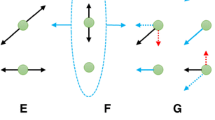Abstract
Conventional imagers and almost all vision processes use and rely on theories that are based on the principle of static image-frames. A frame is a 2D matrix that represents the spatial locations of intensities of a scene projected on the imager. The notion of a frame itself is so embedded in machine vision, that it is usually taken for granted that this is how biological systems store light information. This paper presents a biosinpired event-based image formation principle, which output data rely on an asynchronous acquisition process. The generated information is stored in temporal volumes, which size and information depend only on the dynamic content of observed scenes. Practical analysis of such information will shows that the processing of visual information can only be based on a semiotic process. The paper also provides a general definition of the notion of visual features as the interpretation of signs according to different possible readings of the codified visual signal.











Similar content being viewed by others
References
Ashby, W. R. (1956) Introduction to cybernetics. Methuen, London, UK.
Barbosa, S. M., Fernandes, M. J., & Silva, M. E. (2005) Multivariate autoregressive models for geophysical fields: Application to sea level from Topex/Poseidon satellite altimetry, circuits, and systems (ICECS2004), Tel Aviv, Israel, Dec. 2004 (Vol. 7, 07264, pp. 211–214). Geophysical Research Abstracts.
Barron, J., Fleet, D., & Beauchemin, S. (1994) Performance of optical flow techniques. International Journal of Computer Vision, 12(1), 43–77.
Benosman, R., & Kang, S. B. (2002) Panoramic vision: Sensors theory and applications. Springer Verlag, NY: Monographs in Computer Science, ISBN 0-387-95111-3.
Capurro, C., Panerai, C., & Sandini, G. (1996) Vergence and tracking fusing log-polar images. In Proc. International Conference on Pattern Recognition.
Crossley, S., Thacker, N. A., & Seed, N. L. (1998) Benchmarking of bootstrap temporal stereo using statistical and physical scene modelling. In British Machine Vision Conference, pp. 346–355, 1998.
Dawkins, R. (1996) Climbing mount improbable. New York: Norton.
Delbruck, T., & Lichtsteiner, P. (2007) Fast sensory motor control based on event-based hybrid neuromorphic-procedural system. In Proc. IEEE ISCAS 2007 (pp. 845–849). New Orleans, LA.
Faugeras, O. (1993) Three-dimensional computer vision. MIT Press ISBN-10: 0-262-06158-9.
Fried, S. I., Hsueh, H. A., & Werblin, F. S. (2006) A method for generating precise temporal patterns of retinal spiking using prosthetic stimulation. Journal of Neurophysiology, 95(2), 970–978
Ishiguro, H. (2006) Scientific issues concerning androids. International Journal of Robotics Research, 26(1), 105–117.
Land, M. F., & Fernald, R. D. (1992) The evolution of eyes. Annual Review of Neuroscience, 15, 1–29.
Lichtsteiner, P., Delbruck, T., & Kramer, J. (2004) Improved ON/OFF temporally differentiating address-event imager. In Proc. 11th IEEE Int. Conf. Electronics, Circuits, and Systems (ICECS2004) (pp. 211–214). TelAviv, Israel.
Lichtsteiner, P., Posch, C., & Delbruck, T. (2008) A 128*128 120 dB 15s latency asynchronous temporal contrast vision sensor. IEEE Journal of Solid-State Circuits, 43(2), 566–576.
Lowe, D. (2004) Distinctive image features from scale-invariant keypoints. International Journal of Computer Vision, 60, 91–110.
Marr, D. (1982) Vision: A computational investigation into the human representation and processing of visual information. New York: Freeman.
McCarthy, S. T, & Owen, W. G. (1996) Preferential representation of natural scenes in the salamander retina. Investigative Ophthalmology Vision Science, 37, S674.
Srinivasan, M. V., Laughlin, S. B., & Dubs, A. (1982) Predictive coding: A fresh view of inhibition in the retina. Proceedings of the Royal Society of London, B, 216, 427–459.
Tsin, Y., Ramesh, V., & Kanade, T. (2001) Statistical calibration of CCD imaging process. In Proc. International Conference on Computer Vision (Vol. 1, pp. 480–487).
Wiener, N. (1948) Cybernetics or control and communication in the animal and the machine, Hermann cie editeurs, Paris, The Technology Press, Cambridge, Mass. New York: John Wiley & Sons Inc.
Author information
Authors and Affiliations
Corresponding author
Rights and permissions
About this article
Cite this article
Benosman, R. Vision without Frames: A Semiotic Paradigm of Event Based Computer Vision. Biosemiotics 3, 1–16 (2010). https://doi.org/10.1007/s12304-009-9071-3
Received:
Accepted:
Published:
Issue Date:
DOI: https://doi.org/10.1007/s12304-009-9071-3




